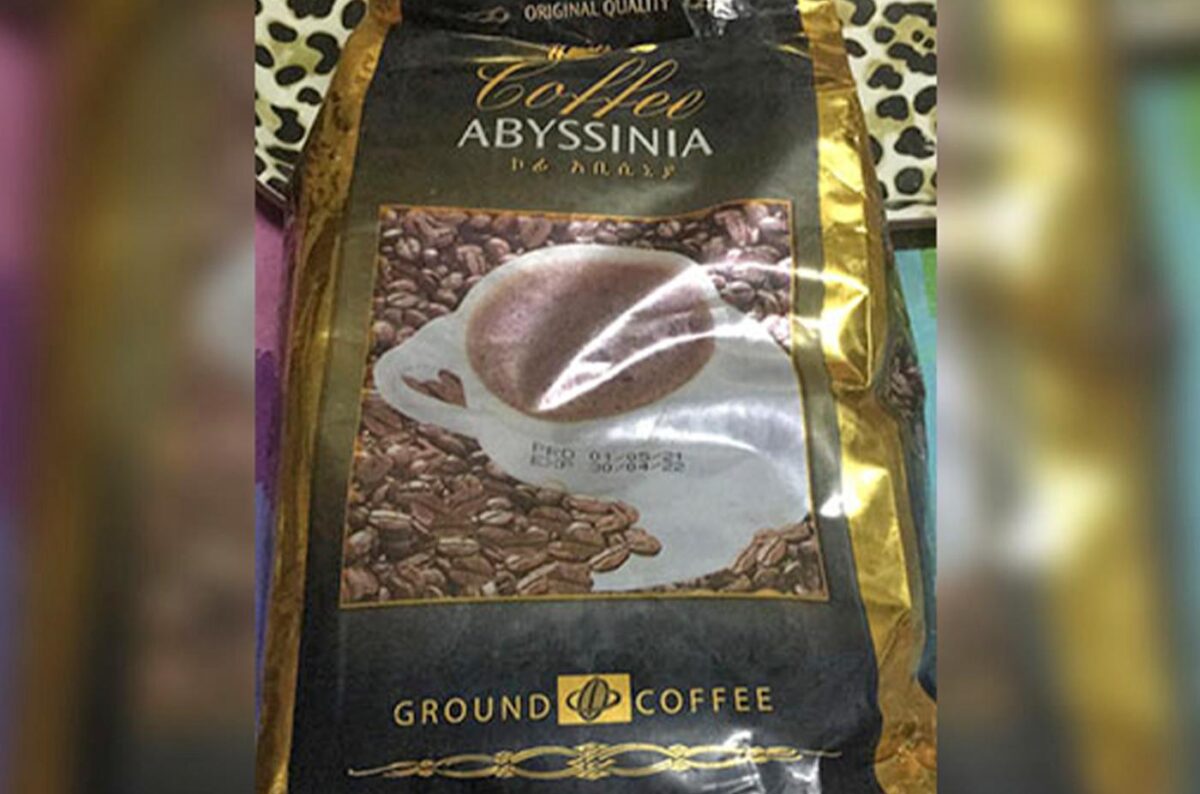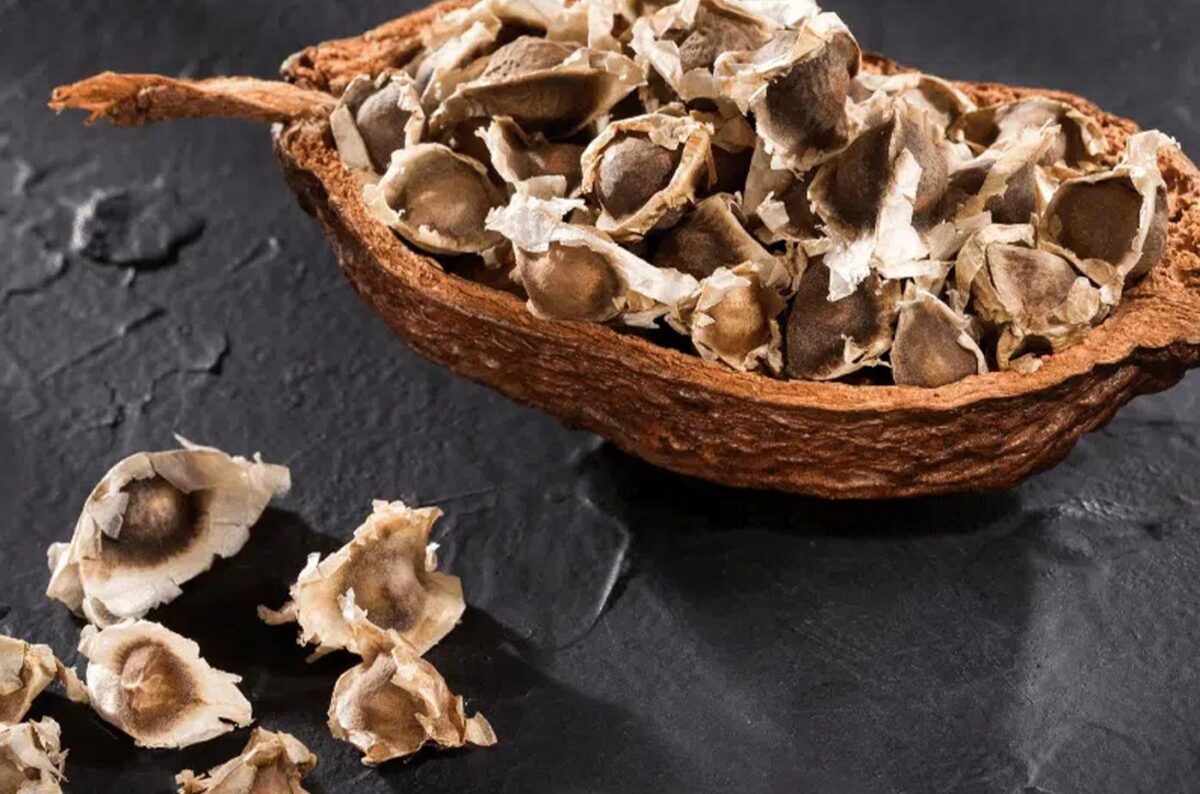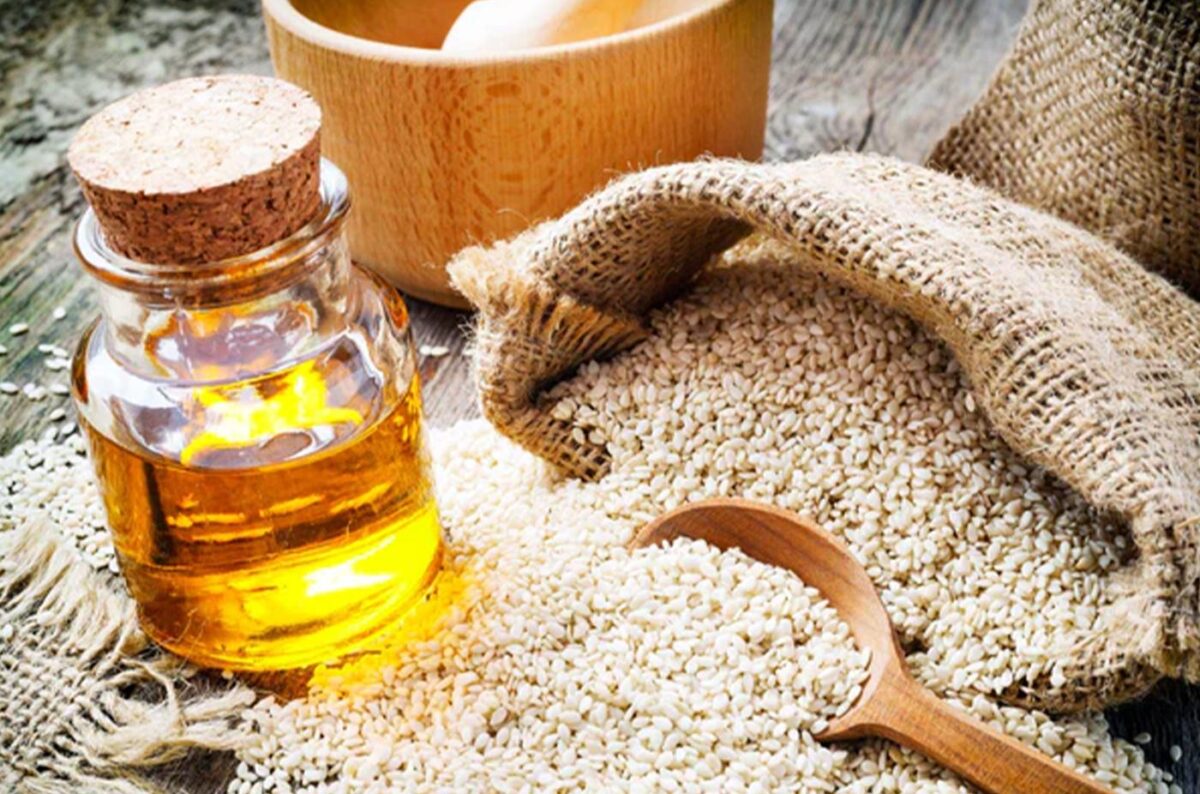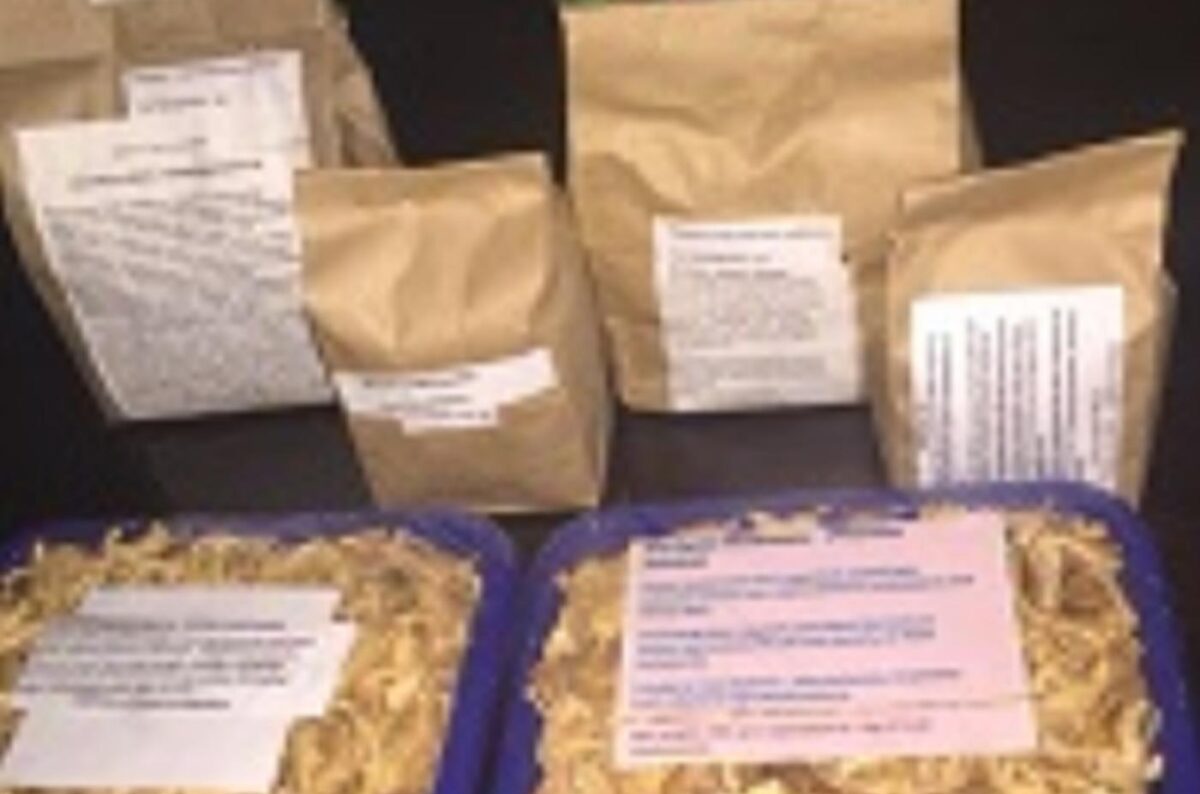

Diatomaceous earth (DE), also known as diatomite, is a naturally occurring, soft, siliceous sedimentary rock composed of the fossilized remains of diatoms, a type of hard-shelled microalgae, and is primarily made up of amorphous silica, with 80–90% silica content, and is used in various applications such as filtration, abrasives, pest control; in agriculture for grain storage and as an insecticide.
The diatoms found in diatomaceous earth are actually skeletons that are made up of silica, a very common type of matter found in nature that makes up about 26 percent of the planet’s crust.
Most diatomaceous earth is made of amorphous silicon dioxide. However, it can contain very low levels of crystalline silicon dioxide.
It has a high porosity due to its microscopically small, hollow particles, which makes it highly effective in various applications.
Diatomaceous earth is available in two different grades:
- Food-Grade — meant to be taken internally by humans (To be food-grade, it must contain less than 1 percent crystalline silica.)
- Non-Food-Grade — used in industrial practices
In industrial and commercial settings, diatomaceous earth is used as a filtration aid for liquids such as drinking water, beer, wine, syrups, sugar, and honey, where it helps clarify and filter out fine particles without altering taste, color, or nutritional properties. It is also used in the production of paints, plastics, rubber, and ceramics as a reinforcing filler, matting agent, or anti-block agent. Its thermal properties allow it to be used as a barrier in fire-resistant safes and in evacuated powder insulation for cryogenics. Additionally, it serves as a support for catalysts in chemical reactions, such as in hydrogenation processes.
In agriculture and food storage, food-grade diatomaceous earth is used as an anti-caking agent in animal feed and for stored grains to prevent infestations by pests like weevils, beetles, and moths. Diatomaceous earth is made of silicon dioxide. When chickens were fed a diet that contained less silicon dioxide than normal, their bone formation was harmed. This suggests that silicon dioxide plays an important role in bone formation.
It is approved by the U.S. Food and Drug Administration (FDA) as a feed additive and is used to preserve foods like bread, fish, and meat by absorbing moisture. It is also used as a clarifier in wine and beer production.
For pest control, diatomaceous earth acts as a mechanical insecticide by dehydrating insects. Its abrasive nature damages the waxy outer layer of an insect’s exoskeleton, leading to water loss and death.
The first pesticide products containing silicon dioxide (diatomaceous earth) were registered in 1960 to kill insects and mites.
Diatomaceous earth is not poisonous; it does not have to be eaten in order to be effective. D.E. causes insects to dry out and die by absorbing the oils and fats from the cuticle of the insect’s exoskeleton. Its sharp edges are abrasive, speeding up the process. It remains effective as long as it is kept dry and undisturbed. It is effective against a wide range of pests, including ants, bed bugs, cockroaches, fleas, ticks, spiders, aphids, slugs, snails, and mites. It is used both indoors and outdoors, applied in thin layers along baseboards, under sinks, behind appliances, and on plants, but its effectiveness diminishes when wet, so it must be reapplied after rain or dew.
D.E. is extremely effective to control ants. For other bugs too, but it is so perfect for ants, if you want to kill them. It is food safe so good for garden pests too.
In personal care and household applications, diatomaceous earth is used as a mild abrasive in toothpaste, facial scrubs, and metal polishes. It can be used as a natural deodorant base due to its moisture-absorbing properties, and as a non-toxic cleaner for sinks, bathtubs, and tiles. It also serves as a deodorizer for garbage bins, litter boxes, refrigerators, and carpets, and can be used to absorb oil spills and other liquid messes.

FOR HEALTH AND WELLNESS:
For health and wellness, food-grade diatomaceous earth is marketed as a source of silica, which is claimed to support bone, skin, nail, hair, and dental health, aid in digestion, help reduce cholesterol levels, and support detoxification. Silica is an important component of human ligaments, cartilage and musculature and is also abundant in plants since it facilitates their growth and development.
Studies have demonstrated that it’s a healthy essential mineral for the body to build strong bones, hair, nails and teeth, and it’s needed to carry calcium into various parts of the body.
Research published in the Journal of Nutrition, Health and Aging showed that many forms of silica exist in nature, and compelling data supports myriad beneficial effects of consuming more silica.
Orthosilicic acid is the form of silicon predominantly absorbed by humans and found in numerous tissues, including nails, bones, tendons, the aorta, the liver and the kidneys.
Compelling evidence exists that suggests silica is essential for health and has a strong anti-aging effect. Deficiencies in silica can contribute to:
- abnormal growth
- deformities in skull and peripheral bones
- joint pain caused from poorly formed joints and reduced contents of cartilage and collagen
- disruption of mineral balance
- damage to the femur and vertebrae
D.E.is commonly used by humans to promote detoxification, aid digestion, and improve skin and hair health. It also has the ability to improve the body’s use of calcium, support bone mineralization, protect joints and fight effects of aging.
Detoxifies the body
Diatomaceous earth — also known as diatomite — works like a natural detoxifying agent within the body, killing parasites and viruses that can contribute to illnesses while also helping to clean the blood.
It’s also inexpensive, simple to use and much safer than many store-bought detox products or plans.
Some of the benefits of using diatomaceous earth internally include:
- reducing odors
- helping curb gas
- cleansing the digestive tract
- boosting liver function
- absorbing harmful toxins within the blood
How does diatomaceous earth work to help with detoxification?
Silica works similarly to antioxidants found in high-antioxidant foods because it retains its traits as a stable particle even while continuously suspended in a liquid medium, allowing it to fight free radical damage.
It’s broken down into a colloidal, which acts like a detoxifier for the blood since it carries an electrical charge that attaches to free radicals and other harmful toxins.
Silica particles can then neutralize the charge of free radicals and remove them from the body through sweat, urine and feces, which slows oxidative damage and has anti-aging effects.
A study published in the American Journal of Clinical Nutrition found that silica also helps eliminate heavy metals from the body, such as aluminum, making it perfect for a heavy metal detox. In studies, it has been shown to have a high-aluminum affinity and reduces aluminum availability from the human gastrointestinal tract.

2. Fights parasites in animals
A 2011 study published in the Oxford Journal of Poultry Science suggested that diatomaceous earth has the potential to be an effective treatment to help control internal worms (parasites). Interestingly enough, this was observed in hens that produce organically raised, free-range eggs.
Giving two breeds of commercial egg-laying hens diatomaceous earth improved production of their eggs and egg quality compared to control groups, effectively working as a parasite cleanse in the process.
The two groups of hens used in the study were found to differ in their resistance to internal parasitic infections, which was observed by examining their gastrointestinal tracts. The hens fed diatomaceous earth had significantly lower incidences of infections.
Those fed diatomaceous earth were also significantly heavier in weight, laid more eggs and consumed more feed than hens fed the control diet — plus their eggs had larger yolks and therefore were more concentrated with nutrients.
3. Improves joint, bones and ligaments health
A 2007 study published in the Journal of Nutrition Health and Aging stated that dietary silicon is beneficial to bone and connective tissue and helps prevent low bone mass (osteoporosis), which is considered “a silent epidemic of the 21st century.”
Silica within diatomaceous earth helps with normal bone metabolism and joint formation, with evidence over the past 30 years suggesting there’s a positive association between dietary silicon intake and better bone mineral density.
Thus, diatomaceous earth makes a healthy addition to any osteoporosis diet and treatment plan.
A number of possible mechanisms for how this works have been suggested, including the possibility that silicon helps with synthesis of collagen (used to form joints, the lining of the digestive tract and connective tissue) and within the mineralization of bones.
While more research is still needed, it appears that silica supplementation can be used to help support normal metabolic processes, preserve healthy joints and prevent bone disorders.
4. Helps clean and protect skin, nails and teeth
Since it has natural abrasive qualities and kills parasites, diatomaceous earth is used in many toothpastes, skin exfoliators, polishes and skin scrubs.
Research has suggested that just like other beneficial clays — like bentonite clay — diatomaceous earth dries out harmful toxins and leaves behind clean, smoothed skin with little to no side effects.
It also seems to have anti-aging effects by helping with the use of calcium in forming strong bones, nails and teeth.
5. Balances cholesterol levels
Another potential benefit of diatomaceous earth is its ability to help balance cholesterol and protect heart health.
A 1998 study published in the European Journal of Medical Research sought to examine the effects of diatomaceous earth supplementation on adults with moderately high cholesterol.
In total, 19 healthy adults with a history of moderately high cholesterol aged 35–67 (10 males, nine females) supplemented with 250 milligrams of diatomaceous earth three times a day for eight weeks.
The results showed that there were significant cholesterol reductions throughout the study, hitting the lowest point during the sixth week. Even more impressive, four weeks after the supplementation was ceased, cholesterol and triglycerides remained lower than at the beginning of the study, while good HDL cholesterol also increased significantly in participants.
HOW TO CONSUME IT:
Here are the recommended tips to subscribe to for safe use of diatomaceous earth as a detoxification agent and to protect bones and joints (but always consult with your healthcare provider before starting a new supplement routine):
- Take about one teaspoon of food-grade diatomaceous earth with liquid once a day. It’s best used on an empty stomach at least one hour before or two hours after eating.
- Drink an additional cup after each dose of diatomaceous earth to improve its effects. In general, make sure to consume plenty of water with diatomaceous earth and stay hydrated.
- Increase your dosage slowly over several weeks, working your way up from one teaspoon to two teaspoons daily, or one tablespoon max. Split the dosage into two parts taken in the morning and one at night.
- Take diatomaceous earth 10 days on and 10 days off for 90 days to effectively and safely detox. Another strategy is to take it daily for a few weeks at a time as you track symptoms, stopping and starting again throughout the year. It’s safest when you give your body breaks and don’t use it continuously for very long periods of time.
- As a note of caution, initially you might notice some mild side effects that can develop as your gut environment changes, yeast dies off and your body releases stored toxins. This can include mild headaches, fatigue and flu-like symptoms, which should diminish within a couple weeks.
Wondering what diatomaceous earth tastes like? If you eat diatomaceous earth, you’ll find that it’s basically tasteless and has a rough, gritty texture.
You can take it with liquid, even enhancing the taste with juice, yogurt or a smoothie if you prefer. It won’t dissolve when mixed into liquid, so it’s normal to see some residue.
You can stir vigorously before consumption to break it up, but it’s still going to leave behind some chalkiness and a gritty texture, which is why disguising it is a a good tip.
Finally , D.E. is also used as a filler in powdered medications and to improve the stability and flow of pharmaceuticals.
Despite its versatility, it is crucial to use food-grade diatomaceous earth for any health, pet, or food-related applications, and to wear a mask when handling the powder to avoid inhaling fine particles, which can irritate the lungs.
Our ‘ROYAL’ Diatomaceous Earth comes in 100 gr.,200 gr.,500 gr.,1 kg. and 5 kg. bags.
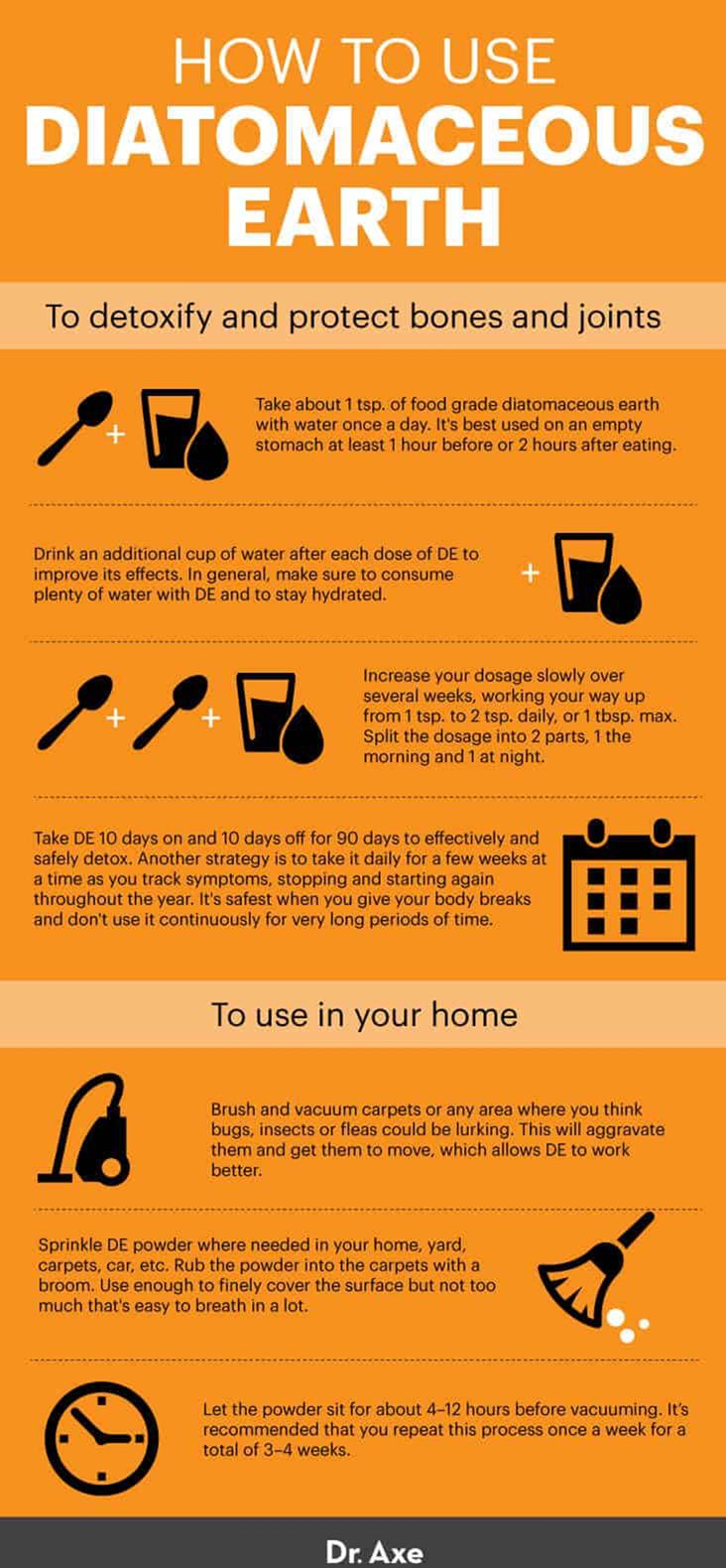
FOR MORE INFORMATION ON DIATOMACEOUS EARTH,TUNE TO:
SUMMARY:
Diatomaceous earth is a naturally occurring, soft, siliceous sedimentary rock composed of fossilized diatoms, which are a type of hard-shelled microalgae
. It is primarily made of amorphous silica, with 80–90% silica content, and is used in various applications such as filtration, abrasives, pest control; in agriculture for grain storage and as an insecticide.
Here are some of the multiple uses of diatomaceous earth (DE), along with how to use it for each purpose:
1. Filtration
- Use: DE is used in water and liquid filtration systems to remove impurities.
- How to use: It is packed into filter housings or used in filter cloths to trap particles. It is commonly used in brewing, swimming pools, and industrial water treatment.
- Pool and Water Filtration
- How it works: DE is used as a filter medium in pool and water filtration systems to trap fine particles.
- Best for: Swimming pools, spas, and industrial water treatment.
- How to use:
- Pool filters: DE is placed in a filter housing and used with a backwash system. It is effective at removing bacteria, algae, and other impurities.
- Water treatment: Used in water treatment plants to filter out contaminants.
- Note: Requires regular cleaning and replacement of the DE filter media.
2. Agriculture and Pest Control
- Use: DE acts as a natural insecticide and is used to control pests like ants, fleas, and cockroaches.
- How to use: Sprinkle it in areas where pests are present, such as around garden beds or in storage areas. It can also be mixed into soil to protect plants.
- Diatomaceous Earth for fleas
It works by physically damaging the exoskeletons of fleas with its microscopic, razor-sharp edges, leading to dehydration and death. This process can begin within a few hours, but it is recommended to leave the DE on treated surfaces for 24 to 48 hours to ensure effectiveness.
DE is most effective against adult fleas and is not effective on flea eggs or pupae, which limits its ability to break the entire flea life cycle. Therefore, it is typically used for household flea control after an infestation has occurred, rather than as a preventive measure for pets. For best results, it should be applied to carpets, pet bedding, furniture, and other areas where fleas are present, and left undisturbed for several days before vacuuming.
While DE is considered safe for humans and pets when used correctly, it can cause irritation to the eyes, skin, and respiratory tract if inhaled in large amounts, especially during application. Therefore, it is advisable to wear a mask when applying it and to keep pets and children away from the treated area until the dust settles. Only food-grade diatomaceous earth should be used, as industrial-grade DE can be harmful if inhaled or ingested.
Some sources suggest that DE can be applied directly to a pet’s fur, focusing on areas like the neck, behind the ears, and under the legs, but caution is advised to avoid the eyes, nose, and mouth. It is also noted that DE can be used internally as a natural dewormer for pets when added to their food, though this should be done with care and following specific dosage guidelines. Despite its use, DE is not widely recommended by veterinarians due to limited scientific evidence on its overall effectiveness and potential for irritation.
For comprehensive flea control, it is recommended to combine DE with other methods such as regular vacuuming, washing pet bedding, and using veterinarian-approved preventative treatments. DE is also effective against other pests like bed bugs, ants, and flea beetles, and can be used in gardens and chicken coops.
4. Abrasives
- Use: DE is used in polishing and cleaning applications due to its abrasive nature.
- How to use: It is used in toothpaste, cleaning powders, and industrial abrasives. It can be mixed with water or oil to create a paste for polishing surfaces.
- Insecticides
- Use: DE is a non-toxic, natural insecticide that works by dehydrating insects.
- How it works: DE is made of tiny, sharp particles that cut through the exoskeletons of insects, causing them to dehydrate and die.
- Best for: Ants, fleas, spiders, bed bugs, and other crawling insects.
- How to use:
- Indoors: Sprinkle DE in cracks, along baseboards, or in corners where insects are seen. Avoid using it in areas where it can be easily disturbed (e.g., on floors where people walk).
- Outdoors: Apply it around garden beds, under decks, or in areas where pests are a problem.
- In homes with pets: Use it in areas where pets cannot access it (e.g., under furniture or in storage boxes).
- Note: It is non-toxic to humans and pets, but it can irritate the respiratory system if inhaled in large quantities. Always wear a mask when applying.
- How to use: Apply it as a powder in cracks, crevices, or directly on infested areas. It is safe for use around pets and humans when used correctly.
6. Fertilizer and Soil Amendment
- Use: DE can improve soil structure and provide trace minerals.
- How to use: Mix it into the soil at a rate of 1–2% by volume before planting. It helps improve aeration and drainage.
7. Animal Feed
- Use: DE is used in animal feed to help with digestion and parasite control.
- It is added to the feed at a rate of 1–2% by weight. It helps in reducing internal parasites in livestock.
- How it works: DE helps with digestion, reduces internal parasites, and supports the health of the digestive tract.
- Best for: Livestock such as chickens, cows, horses, and pigs.
- How to use:
- Mix into feed: Add 1–2% DE by weight to the animal’s feed. For example, if the feed is 100 lbs, add 1–2 lbs of DE.
- Free-choice feeding: Place DE in a separate container so animals can eat it as needed.
- Note: Use food-grade DE, and ensure it is finely ground for easier consumption.
Here are a few of the key uses of diatomaceous earth (DE), including how to use it effectively in each scenario.
- Cleaning and Polishing (Abrasives)
- How it works: The fine, abrasive particles help remove dirt, grime, and stains.
- Best for: Cleaning surfaces like wood, metal, or stone; polishing teeth; and removing paint or rust.
- How to use:
- Toothpaste: Mix DE with water or a small amount of baking soda to make a natural toothpaste.
- Surface cleaning: Combine DE with water or oil to make a paste and apply it to surfaces like countertops, tiles, or metal.
- Polishing: Use DE in a polishing cloth to shine surfaces like silver or brass.
- Note: Always test on a small area before applying it to a larger surface.
9. Soil Amendment and Fertilizer
-How it works**: DE improves soil structure by increasing aeration and drainage. It also provides trace minerals like silica, iron, and magnesium.
- Best for: Garden soil, compost, or potting mixes.
- How to use:
- Mix into soil: Add 1–2% DE by volume to the soil before planting. For example, if you have 100 lbs of soil, add 1–2 lbs of DE.
- Compost: Add DE to your compost pile to help break down organic matter and improve the quality of the compost.
- Plant health: Helps plants resist pests and diseases by strengthening cell walls.
- Note: Use food-grade DE for soil and plant applications, not the filtered or industrial grade.
10. Animal Feed Additive
- How it works: DE helps with digestion, reduces internal parasites, and supports the health of the digestive tract.
- Best for: Livestock such as chickens, cows, horses, and pigs.
- How to use:
- Mix into feed: Add 1–2% DE by weight to the animal’s feed. For example, if the feed is 100 lbs, add 1–2 lbs of DE.
- Free-choice feeding: Place DE in a separate container so animals can eat it as needed.
- Note: Use food-grade DE, and ensure it is finely ground for easier consumption.
- At Home and Garden Uses
Here are practical uses of diatomaceous earth (DE) in your home and in the garden, along with how to use it effectively in each case:
Pest Control
- What it does: DE acts as a natural, non-toxic insecticide by dehydrating insects.
- How to use:
- Sprinkle it in areas where pests are common: under sinks, behind appliances, in cracks, or along baseboards.
- Avoid using it in areas where it can be easily disturbed (e.g., on floors where you walk).
- It’s safe for use around pets and children, but avoid inhalation by wearing a mask when applying.
2. Cleaning and Polishing
- What it does: The fine, abrasive particles help remove dirt, grime, and stains.
- How to use:
- Toothpaste: Mix DE with a little water or baking soda to make a natural toothpaste.
- Surface cleaning: Mix DE with water or oil to make a paste and use it to clean countertops, tiles, or metal surfaces.
- Polishing: Use it in a polishing cloth to shine silver, brass, or other metal items.
3. Dust Mite and Allergen Control
- What it does: DE helps reduce dust mites and other allergens in carpets and bedding.
- How to use:
- Sprinkle it on carpets and let it sit for a few hours before vacuuming.
- Add it to bedding or vacuum bags to help reduce allergens.
In the Garden :
1. Pest Control
- What it does: DE is a natural insecticide that dehydrates crawling insects like slugs, snails, aphids, and ants.
- How to use:
- Sprinkle it around the base of plants or in garden beds.
- Apply it in dry conditions, as moisture can reduce its effectiveness.
- Avoid using it in areas where it can be washed away by rain or irrigation.
2. Soil Amendment
- What it does: DE improves soil structure, aeration, and drainage. It also provides trace minerals like silica, iron, and magnesium.
- How to use:
- Mix 1–2% DE (by volume) into the soil before planting.
- Add it to compost piles to help break down organic matter and improve compost quality.
- Helps plants resist pests and diseases by strengthening cell walls.
3. Fertilizer
- What it does: DE provides trace minerals that support plant growth and health.
- How to use:
- Apply it directly to the soil around plants or mix it into the soil.
- It’s best used in conjunction with other organic fertilizers.
4. Insect Control in Greenhouses or Pots
- What it does: DE can be used in greenhouses or for potted plants to control pests.
- How to use:
- Sprinkle it on the soil surface or around the base of plants.
- Avoid using it in areas where it can be washed away by irrigation.
🛠️ Important Notes
- Always use food-grade DE for home and garden use (not the filtered or industrial grade).
- Wear a mask and gloves when handling DE to avoid inhalation or skin irritation.
- Store DE in a sealed container to keep it dry and effective.
————————————————————————————————–

